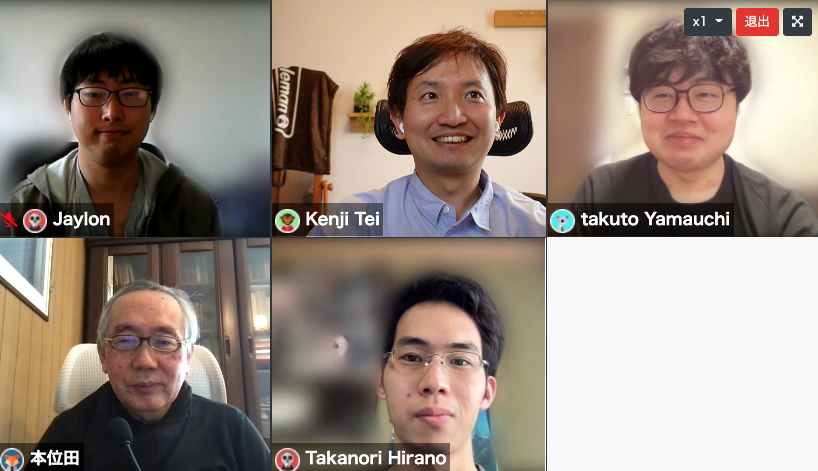For almost 3 years, Waseda University, in Japan, has been a key member of the M-Sec consortium, supporting the development and testing of a technology that intends to support our cities to become smarter and, at the same time, more cyber secure. Meet their team and the work behind their involvement in the project, learn more about their role in M-Sec and where will they go next
We spoke with Prof. Kenji Tei, Associate Professor at the Institute for Advanced ICT Research of Waseda University to know more about the University’s role in the M-Sec Project.
1. Professor, thank you so much for agreeing with this interview. Please briefly present yourself and the Institute you work at.
I am an Associate professor at the Institute for Advanced ICT Research of Waseda University, in Japan. I received a Ph.D. degree in Engineering from Waseda University in 2008. My main research topics include software architecture, software verification and synthesis, model-driven engineering, and self-adaptive systems. I received SENSORCOMM Best Paper Award 2012 and SEAMS Best Paper Award 2016. I have also served as a programme co-chair of SEAMS 19, and a tool and demonstration chair of MODELS 21. I have been involved in three EU-JP joint research projects for smart cities: ClouT project, BigClouT project, and more recently the M-Sec project.
Waseda University is a Japanese private research university in Shinjuku, Tokyo. Founded in 1882 as the TÅkyÅ Senmon GakkÅ by ÅŒkuma Shigenobu, the school was formally renamed Waseda University in 1902. Waseda consistently ranks among the most academically selective and prestigious universities in Japanese university rankings. It is often ranked alongside Keio University, its rival, as the best private university in Japan. In 2021, Waseda ranked 189th in the QS World University Rankings. Waseda is among the top type of the select Japanese universities assigned additional funding under the Ministry of Education, Culture, Sports, Science and Technology’s “Global 30” Project to enhance Japan’s global educational competitiveness.
The Institute for Advanced ICT Research is a research institute of Waseda University focused on advanced ICT technologies enabling a future smart society. It covers diverse fundamental technologies (including AI/bigdata, video/image processing, Information Centric Network, security, 5G, smart IoT, and robotics), and conducts the social implementation of smart systems in diverse domains such as agriculture, healthcare, transportation, energy, and etc.
2. Why have you and Waseda University decided to join the M-Sec Project?
The Institute for Advanced ICT Research devises a number of advanced ICT technologies for a future smart society. It aims to put those technologies into practice. The M-Sec project is one of the best fields to validate our technologies and deliver values to a real smart society.
I am working on software development techniques and tools for smart IoT applications, such as a model-driven development tool for smart city applications, a controller synthesis tool for reactive systems, and design techniques for smart IoT system’s architecture. I aimed to apply those tools and techniques to real smart city application development in this project to validate and extend them. Besides, I expected to find joint research topics with the other partners in this project.
3. Can you also present the team that works with you for the M-Sec Project?
From Waseda University, my laboratory is mainly involved in this project, including three Ph.D. students, four master students, and six undergraduate students.
4. What has been the main role of the Institute for Advanced ICT Research at the M-Sec Project and have you been able to achieve all you have set for? What were your and your team’s main challenges?
I am the Japanese-side leader of WP4 Multi-layered Security technologies, along with its responsibility on Task 2.4 Overall system validation and Evaluation and Task 3.2 M-Sec Architecture, given my expertise in dependable smart IoT application development. I am also involved in Task 4.4 Application level security to apply our development tools and techniques for secure smart city application development.
And yes, I have already achieved all my expectation. I have successfully integrated our tools and techniques mainly with tools and services provided by other partners, in particular, Keio University. We have already applied the integration to real smart city application scenario under UC3 Secure and Trustworthy Mobile Sensing Platform. Besides, we are now writing a joint research paper.
5. Looking back on what you and your team have done in the scope of the M-Sec Project, what are your main takeaways?
Our team achieved experience on applying our techniques and tools in real smart city application scenario. Such experiences and exemplars will help us to proceed with our research. We also successfully started concrete joint work with the other partners, in particular, Keio University.
6. With only a few months until the end of the project, on what major developments do you and your team still need to focus? Do you feel confident?
We will write joint research papers with the other partners about the integration and validation achieved by this project.
7. Did you find this experience of participating in an EU-JP partnership rewarding?
Yes. Generally, it is not easy to find a pragmatic scenario reflecting real stakeholders needs and enabled by applying research outcomes, but we successfully found it through a number of discussions with our partners and related stakeholders. I enjoyed such collaborations achieved through this project.
8. Now looking more towards the future, what are your and your teams plans after the end of the M-Sec Project?
I will continue to research and develop tools supporting smart city application development based on strong relationship with the partners and stakeholders, which was achieved by this project.


